The Palazzo Priuli Stazio is a Baroque architecture palace located near San Giacomo dell'Orio in the sestiere of Santa Croce in Venice, Italy.

The Palazzo Priuli Stazio is a Baroque architecture palace located near San Giacomo dell'Orio in the sestiere of Santa Croce in Venice, Italy.

Previously, the place had been property of the Suriàn family, admitted to Venetian aristocracy in 1648. The family originally had moved from Rimini in the 15th century, and included the physician Giacomo; Grand Chancellor Andrea; Bernardo, archbishop of Corfu in 1482; and an Antonio, patriarch of Venice in 1504. The aristocratic branch was soon extinguished by 1679.
In 1534, the Suriàn family sold this palace to Marcantonio Prezzato, a rich merchant from Bergamo, who moved to Venice around 1537. Agostino, the son of Marcantonio commissioned reconstruction using designs of Jacopo Sansovino. In 1636, a son of Agostino, also named Marcantonio, in turn sold the palace to Lorenzo and Bernardo Stazio; in 1659, the Stazio family joined the aristocracy. In 1701, by virtue of Elisabetta Stazio's marriage to Michiele Priuli-Renier, the palace was ultimately inherited in the 19th century, by two sisters: Elisabetta Labia Priuli and Orsola Priuli Maccarani, both living in Rome. In 1859, the palace was deeded to the Comune of Venice to serve as quarters of the Municipal Guards.
The interior decoration has since been dispersed. In the 18th century, the ground floor had, in the style of Alessandro Vittoria, a bust of a bearded man; likely a portrait of someone from the Priuli family. There were also once four oil canvases located in the piano nobile depicting illustrious members of the Priuli Family:
It now serves as a middle school scuola media for the Istituto Comprensivo Francesco Morosini.
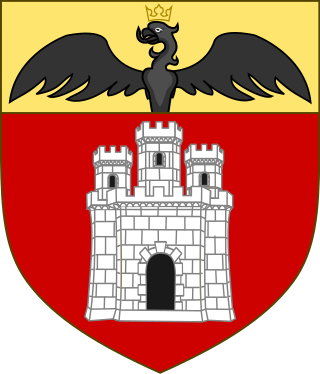
The House of Giustiniani was the name of a prominent Italian family which originally belonged to Venice, but also established itself in Genoa, and at various times had representatives in Naples, Canary Islands, Corsica and in the islands of the Archipelago, where they had been the last Genoese rulers of the Aegean island of Chios, which had been a family possession for two centuries until 1566. The family claimed descent from Byzantine emperor Justinian I.

The Bolognese School of painting, also known as the School of Bologna, flourished between the 16th and 17th centuries in Bologna, which rivalled Florence and Rome as the center of painting in Italy. Its most important representatives include the Carracci family, including Ludovico Carracci and his two cousins, the brothers Agostino and Annibale Carracci. Later, it included other Baroque painters: Domenichino and Lanfranco, active mostly in Rome, eventually Guercino and Guido Reni, and Accademia degli Incamminati in Bologna, which was run by Lodovico Carracci. Certain artistic conventions, which over time became traditionalist, had been developed in Rome during the first decades of the 16th century. As time passed, some artists sought new approaches to their work that no longer reflected only the Roman manner. The Carracci studio sought innovation or invention, seeking new ways to break away from traditional modes of painting while continuing to look for inspiration from their literary contemporaries; the studio formulated a style that was distinguished from the recognized manners of art in their time. This style was seen as both systematic and imitative, borrowing particular motifs from the past Roman schools of art and innovating a modernistic approach.

The Barbaro family was a patrician family of Venice. They were wealthy and influential and owned large estates in the Veneto above Treviso. Various members were noted as church leaders, diplomats, patrons of the arts, military commanders, philosophers, scholars, and scientists.
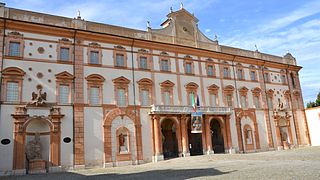
The Ducal Palace in Sassuolo is a Baroque villa located in the town of Sassuolo, thirty minutes outside Modena, northern Italy.

San Francesco della Vigna is a Roman Catholic church in the Sestiere of Castello in Venice, northern Italy.
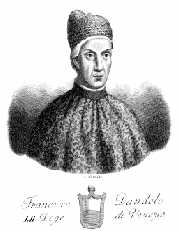
Francesco Dandolo was the 52nd Doge of Venice. He ruled from 1329 to 1339. During his reign Venice began its policy of extending its territory on the Italian mainland.

San Giorgio in Braida is a Roman Catholic church in Verona, region of Veneto, Italy. A church titled San Giacomo in Braida, was located in Cremona, and became superseded by Sant'Agostino.
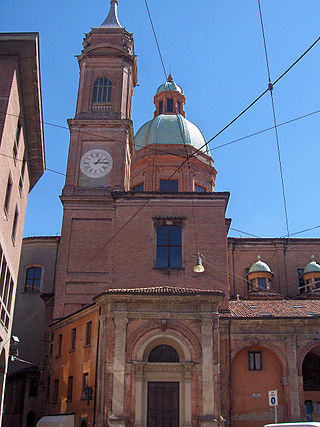
Santi Bartolomeo e Gaetano is a Renaissance style, Roman Catholic church in central Bologna; it is located near the Due Torri adjacent to the Strada Maggiore.
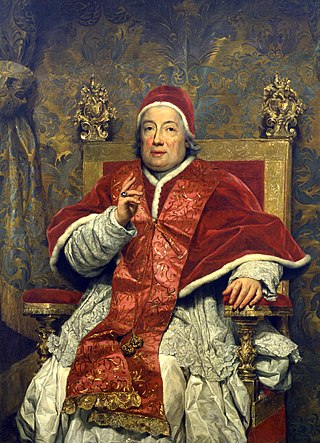
Pope Clement XIII created 52 cardinals in seven consistories.
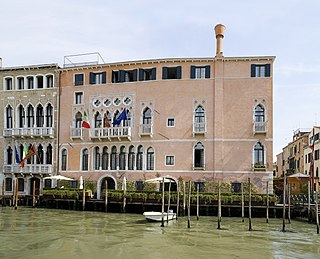
The Ca' Sagredo is a 14th-century Byzantine-Gothic style palace located on the corner of the Strada Nuova and Campo Santa Sofia, in the sestiere of Cannaregio in central Venice, Italy. It now faces the Grand Canal (Venice), and across the campo from the Ca' Foscari. On the left side there is the Palazzo Giustinian Pesaro.
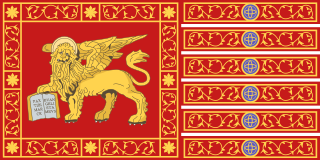
The island of Cyprus was an overseas possession of the Republic of Venice from 1489, when the independent Kingdom of Cyprus ended, until 1571, when the island was conquered by the Ottoman Empire.
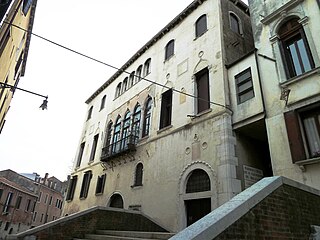
The Palazzo Grandiben Negri is a small brick palace located facing the Rio of Ca' di Dio, adjacent to the larger Palazzo Erizzo, and diagonally across the rear of the church of San Martino in the sestiere of Castello in Venice, Italy.
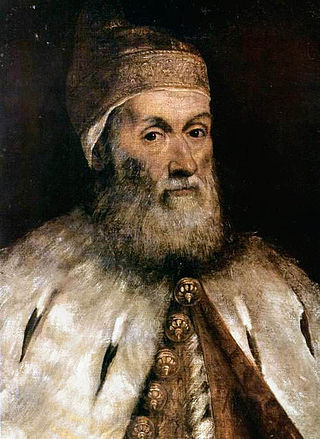
The House of Priuli was a prominent aristocratic family in the Republic of Venice; they entered the Venetian nobility early in the 14th century. Their members include:

The Palazzo Benedetti a Santa Sofia is a 14th-century Venetian-Gothic style palace with a characteristic and rare sottoportego or portico at the canal side, located near Santa Sofia in the sestiere of Cannaregio. Across the bridge from the palace is the Palazzo Priuli Stazio. This palace also called the Palazzo di Sottoportico della Guerra.

The Galleria Giorgio Franchetti alla Ca' d'Oro is an art museum located in the Ca' d'Oro on the Grand Canal in Venice, Italy.
The Bailo of Corfu was the leader of the Venetian delegation to the island of Corfu who oversaw the affairs of the island while under Venetian rule and protected the commercial and military interests of the Republic of Venice. The first mention of a bailo in Corfu is in 1386 and is found in a Greek chronicle. The bailo of Corfu is also mentioned in a document by historian Marco Guazzo from 1544.

The Palazzo Loredan Cini is a Gothic-style palace located between the Palazzo Balbi Valier and the Rio San Vio on the Grand Canal, in the sestiere of Dorsoduro, Venice, Italy. The palace was formed from the amalgamation of the former Palazzo Foscari-Loredan with the adjacent Palazzo Grimani. The narrow facade on the Canal has no entrance, but the facade to the north on the Rio, has a single water door, and is connected to the adjacent campo by a bridge. The facade is decorated with two poliforas.
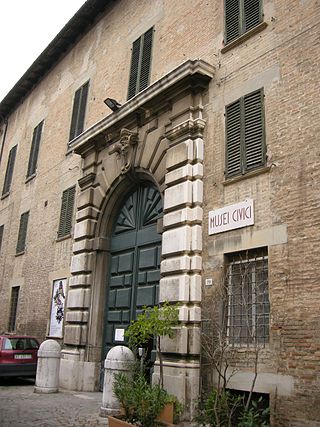
The Civic Museum of Palazzo Mosca is the main civic museum of Pesaro, displaying art and decorative works, located in Piazza Mosca in this town of the region of the Marche, Italy.

Bernardo Bembo was a Venetian humanist, diplomat and statesman. He was the father of Pietro Bembo.
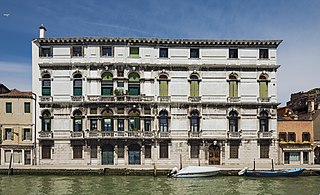
Palazzo Surian Bellotto is a Baroque palace in Venice, Italy. The palazzo is located in the Cannaregio district and overlooks the Cannaregio Canal.